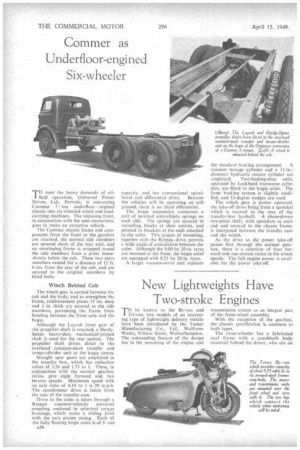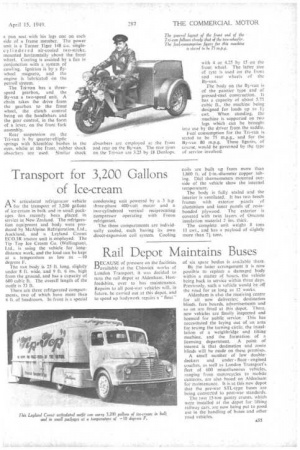New Lightweights Have Two-stroke Engines T O be known as the
Page 24

Page 25

If you've noticed an error in this article please click here to report it so we can fix it.
By-van and Tri-van, two models of an interesting type of lightweight delivery vehicle have been introduced by the Turner Manufacturing Co., Ltd,, Wulfruna Works, Villiers Street, Wolverhampton. The outstanding feature of the design lies in the mounting of the engine and
transmission system as an integral part of the front-wheel assembly.
With the exception of the gearbox, the chassis specification is common to both types.
The three-wheeler has a fabricated steel frame with a coachbuilt body mounted behind the driver, who sits on a pan seat with his legs one on each side of a frame member. The power unit is a Turner Tiger 148 c.c, singlec ylindered air-cooled two-stroke, mounted horizontally above the front wheel. Cooling is assisted by a fan in conjunction with a system of cowling. Ignition is by a flywheet magneto, and the engine is lubricated on the petroil system. ,
The Tni-van has a threespeed gearbox, and the By-van a two-speed unit. A chain takes the drive from the gearbox to the front wheel, the clutch control being on the handlebars and the gear control, in the form of a lever, on the front fork assembly.
Rear suspension on the Tr-van is by quarter-elliptic springs with Silentbloc bushes in the eyes, whilst at the front, rubber shock absorbers are used. Similar shock absorbers are employed at the front and rear on the By-van. The rear tyres on the Tri-van are 3.25 by 18 Dunlops. with 4 or 4.25 by 15 on the front wheel. The latter size of tyre is used on the front and rear wheels of the By-van.
The body on the By-van is of the pannier •type and of pressed-steel construction. It has a capacity of about 5.75 cubic ft., the machine being designed for loads up to 1 k cwt. When standing, the machine is supported on two legs which can be brought into use by the driver from the saddle.
Fuel consumption for the Tr-van is stated to be 75 m.p.g., and for the By-van 80 'mpg. These figures, of course, would be governed by the type of service involved.


























